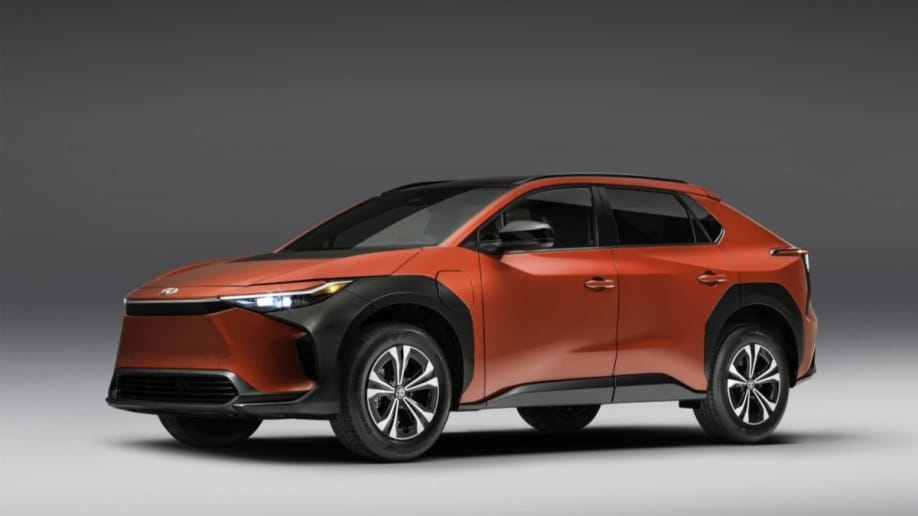
It’s not Toyota’s decision. The federal government lets new electrified car buyers claim up to $7,500 in credit against the federal income taxes they owe. It applies to the first 200,000 electric vehicles (EVs), plug-in hybrid vehicles (PHEVs), or hydrogen fuel-cell vehicles any manufacturer sells.
That 200,000-car limit applies to the entire automaker, not each of its separate brands. So, the announcement affects both Toyota and its Lexus luxury brand. The two have now sold over 200,000 electrified vehicles combined.
Act Fast. You Might Still Get It
The credit won’t disappear instantly. Instead, it sunsets gradually over more than a year.
There is a brief window when buyers can still get the full $7,500 discount. Toyota publicly announced that it crossed the 200,000-car threshold, but the IRS still needs to certify that it agrees. That hasn’t happened yet, though it could come as soon as next week.
Then, the credit halves for six months. Buyers still qualify for a $3,750 discount at that point. Six months after the IRS finding, it halves again, to $1,875. It then hangs on for another six months before ending 18 months from the date of the IRS decision.
Nissan, Ford Likely Next
Both General Motors and Tesla have already crossed the threshold. Buyers of their cars don’t qualify for any portion of the tax credit.
Nissan and Ford will likely cross it next, possibly before the end of 2022. Ford may get there first, thanks to brisk sales of its relatively-new Mustang Mach-E electric SUV and F-150 Lightning electric pickup. Nissan has a significant head start, with its Leaf in its 13th year of production. But the company recently paused sales of its second EV, the Ariya crossover.
Toyota Got Here In An Unusual Way
Toyota is the third automaker to cross the 200,000-car line. But they’re the first to do it while barely selling any pure electric cars.
Instead, Toyota reached the mark almost entirely on sales of plug-in hybrid vehicles. PHEVs use both a gasoline engine and an electric motor, like the traditional hybrids Toyota first made famous. But PHEVs, as the name suggests, can be plugged in to charge. They can travel on electric power alone until their battery is nearly drained – around 25 to 35 miles for most – before their gasoline engine kicks in.
Many Americans drive less than 30 miles on an average day. So owning a PHEV is like owning an EV most of the time. But it allows drivers to take longer road trips with gasoline without worrying about charging stations.
Toyota sells many plug-in hybrids, including America’s best-selling PHEV, the RAV4 Prime. In the first quarter of this year, fully a quarter of Toyota and Lexus sales were PHEVs.
The company recently introduced its first mainstream pure EV, the bZ4X. That compact SUV, with its $42,999 price range and a drivetrain limited to 214 total horsepower, hasn’t been received with the praise rivals like the Hyundai Ioniq 5 and Kia EV6 have won.
It was also subject to an embarrassing and dangerous early recall last month. Toyota issued a rare stop driving order because of a risk the wheels could fall off while driving. The company is currently collecting the bZ4X models it has already sold, fixing that defect, and returning them to the road.
Toyota also sells a hydrogen fuel-cell car in parts of California, the Mirai, which contributed to crossing the rebate barrier.
More EVs Coming – As the Discount Fades
The company, however, has big plans for an electric future. Late last year, it showed off 17 EV concepts. They covered nearly every market segment, from pickups to sports cars to large SUVs. Toyota did not say which would see production and has not announced an end date for gasoline-powered cars like some rivals have.
It’s also possible that Toyota has held off on a large-scale EV effort because it is researching a moonshot meant to upend the EV race. The company has been working to develop a next-generation solid-state EV battery. Some researchers believe solid-state batteries could power EVs with more than twice the range of today’s electric cars, charge much faster, weigh less, and avoid using the rare earth minerals that raise questions about the environmental and human rights impact of today’s EV batteries.
Researchers have successfully developed solid-state batteries. But, to date, building them requires near-zero humidity conditions that are too expensive to replicate in large-scale manufacturing. If Toyota does succeed in unveiling the first commercially-viable solid-state battery, they’ll face the familiar problem of trying to scale an expensive new technology. That’s the same issue that has kept current EVs out of reach for many buyers.







